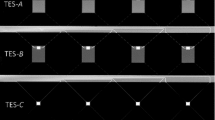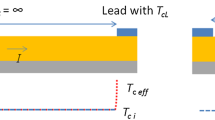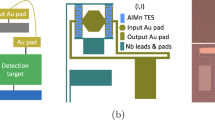Abstract
Many current and future applications for superconducting transition-edge sensor (TES) microcalorimeters require significantly faster pulse response than is currently available. X-ray spectroscopy experiments at next-generation synchrotron light sources need to successfully capture very large fluxes of photons, while detectors at free-electron laser facilities need pulse response fast enough to match repetition rates of the source. Additionally, neutrino endpoint experiments such as HOLMES need enormous statistics, yet are extremely sensitive to pile-up effects that can distort spectra. These issues can be mitigated only by fast rising and falling edges. To address these needs, we have designed high-speed TES detectors with novel geometric enhancements to increase the thermal conductance of pixels suspended on silicon nitride membranes. This paper shows that the thermal conductivity can be precisely engineered to values spanning over an order of magnitude to achieve fast thermal relaxation times tailored to the relevant applications. Using these pixel prototypes, we demonstrate decay time constants faster than 100 \(\mu \)s, while still maintaining spectral resolution of 3 eV FWHM at 1.5 keV. This paper also discusses the trade-offs inherent in reducing the pixel time constant, such as increased bias current leading to degradation in energy resolution, and potential modifications to improve performance.




Similar content being viewed by others
Notes
The critical temperature, \(T_c\), can be altered as well, but in practice is determined by the constraints of the cryogenic system. The power required to bias the device into the transition, \(P_J\) is determined by the thermal conduction and the bath and critical temperatures. \(\beta \) is smaller than unity in these devices, so further reduction provides only marginal speed improvement.
Allowing the detector to saturate makes the pulse “flat-topped,” lasting longer before it decays. This does not solve the problem we are trying to address.
These scaling laws for membrane transport and e-p coupling can be viewed as lower- and higher-dimensional analogues of the Stefan–Boltzmann law.
References
J. Ullom, D. Bennett, Supercond. Sci. Tech. 28(8), 84003 (2015). doi:10.1088/0953-2048/28/8/084003
W.B. Doriese et al., J. Low Temp. Phys. doi:10.1007/s10909-015-1373-z
J.A.B. Mates, Doctoral thesis, University of Colorado, 2010
O. Noroozian et al., Appl. Phys. Let. 103(20), 202602 (2013). doi:10.1063/1.4829156
J. Ullom et al., Synchrotron Radiat. N. 27(4), 24–27 (2014)
B.K. Alpert et al., Eur. Phys. J. C 75(3), 1–11 (2015). doi:10.1140/epjc/s10052-015-3329-5
S. Eliseev et al., Phys. Rev. Lett. 115(6), 062501 (2015). doi:10.1103/PhysRevLett.115.062501
B.K. Alpert et al., J. Low Temp. Phys. doi:10.1007/s10909-015-1402-y
K. Irwin, G. Hilton, Topics Appl. Phys. 99, 63–149 (2005)
P. Khosropanah et al., Proceeding of the SPIE, vol. 7741, id. 77410L (2010). doi:10.1117/12.857725
F.C. Wellstood, C. Urbina, J. Clarke, Phys. Rev. B 49(9), 5942 (1994). doi:10.1103/PhysRevB.49.5942
D.A. Bennett et al., J. Low Temp. Phys. 167, 102–107 (2012). doi:10.1007/s10909-011-0431-4
Acknowledgments
Much of this work was funded by the NIST Innovations in Measurement Science program and the Department of Energy office of Basic Energy Science.
Author information
Authors and Affiliations
Corresponding author
Additional information
Official contribution of NIST, not subject to copyright in the United States.
Rights and permissions
About this article
Cite this article
Hays-Wehle, J.P., Schmidt, D.R., Ullom, J.N. et al. Thermal Conductance Engineering for High-Speed TES Microcalorimeters. J Low Temp Phys 184, 492–497 (2016). https://doi.org/10.1007/s10909-015-1416-5
Received:
Accepted:
Published:
Issue Date:
DOI: https://doi.org/10.1007/s10909-015-1416-5




